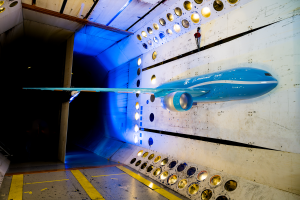The fleet of aircraft at the Wallops Flight Facility that support NASA’s airborne sciences program are preparing for a busy year as the agency continues several projects investigating critical scientific questions about how our planet is changing and what impacts humans are having on it.
Field experiments are an important part of NASA’s Earth science research. Scientists worldwide use the agency’s field data, together with satellite observations and computer models, to tackle environmental challenges and advance our knowledge of how the Earth works as a complex, integrated system.
Werner Winz, chief of the Wallops aircraft projects office, said, “The science projects we are supporting this year will take us over a vast area of the world. We will cover the mid-west and east coast of the United states, the north Atlantic Ocean including Greenland, the west coast of Africa and Antarctica.”
The 2017 missions begin with the Atmospheric Carbon and Transport – America (ACT-America) as research teams returned to the skies over the eastern half of the United States in January using a Wallops based C-130 aircraft. With ACT-America scientists continue tracking the movement of atmospheric carbon, the objective being to better understand the sources and sinks of greenhouse gases. Flights will originate from Louisiana, Nebraska and Virginia. The first mission under ACT-America was conducted in the summer 2016 and another mission will be conducted in October and November later this year.
Operation IceBridge, supported by the Wallops P-3 aircraft, returns in March to the Arctic for the ninth straight year to measure changes in the elevation of the Greenland ice sheet and sea ice extent. In the fall, the team also will begin its yearly measurements of land and sea ice in Antarctica. For only the second time the P-3 will conduct the Antarctica flights originating on the continent.
A Wallops C-23 aircraft is conducting low-level aircraft flights measuring greenhouse gases over the mid-Atlantic region in May. The flights are for the CARbon Airborne Flux Experiment or CARAFE, which will measure the exchange of greenhouse gases such as carbon dioxide and methane between the Earth and the atmosphere in the region. In addition, water vapor, temperature, and vertical wind measurements will be taken. This is the second year the C-23 has supported the CARAFE.
In between Operation IceBridge missions, the P-3 travels this summer to Namibia, Africa, for the second consecutive year supporting the Observations of Clouds above Aerosols and their Interactions (ORACLES), which uses airborne instruments to probe the impact on climate and rainfall of the interaction between clouds over the southeastern Atlantic Ocean and smoke from vegetation burning in southern Africa.
The North Atlantic Aerosols and Marine Ecosystems Study (NAAMES) will take to the sea and air in September, for the third year, to study how the world’s largest plankton bloom gives rise to small organic particles that influence clouds and climate. A Wallops C-130 aircraft supports this project.
To follow all of NASA’s 2017 Earth science field campaigns, visit:
https://www.nasa.gov/earthexpeditions
Keith Koehler
Wallops Flight Facility
keith.a.koehler@nasa.gov






























